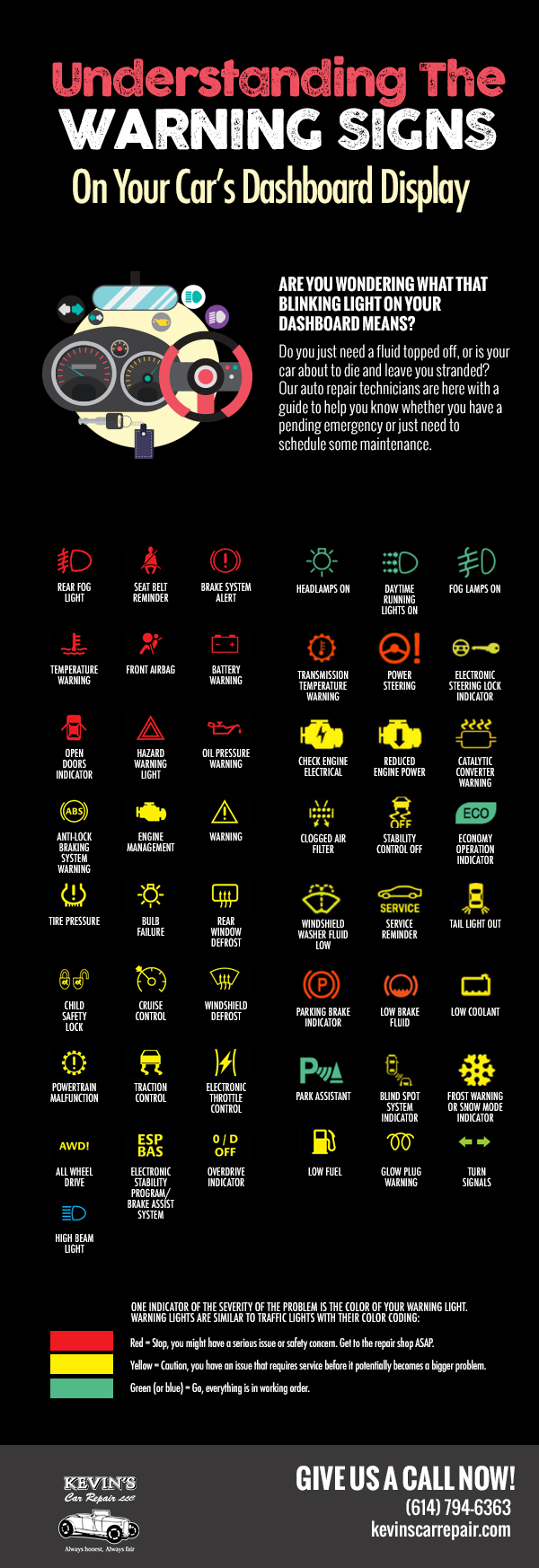Examining Your Automobile'S Caution Indicators: What They Truly Share
Examining Your Automobile'S Caution Indicators: What They Truly Share
Blog Article
Post Written By-Vinson Dalgaard
When you lag the wheel, those beautiful caution lights on your control panel can be a little bit perplexing. Do you know what they're attempting to tell you regarding your auto's health? Recognizing the relevance of these lights is important for your security and the longevity of your car. So, the next time among those lights turns up, wouldn't you intend to analyze its message accurately and take the necessary steps to address it?
Common Warning Lighting and Interpretations
Determine common caution lights in your vehicle and comprehend their meanings to make certain secure driving.
The most common caution lights include the check engine light, which signifies issues with the engine or discharges system. If this light comes on, it's important to have your lorry examined without delay.
The oil stress cautioning light indicates reduced oil stress, calling for instant focus to prevent engine damages.
A flashing battery light may recommend a faulty billing system, potentially leaving you stranded if not dealt with.
The tire pressure surveillance system (TPMS) light notifies you to low tire stress, impacting car stability and fuel effectiveness. Overlooking this might cause risky driving conditions.
The abdominal light suggests a problem with the anti-lock braking system, endangering your capability to stop rapidly in emergency situations.
Lastly, the coolant temperature advising light warns of engine overheating, which can cause serious damage if not dealt with promptly.
Understanding these common caution lights will aid you resolve concerns without delay and preserve secure driving conditions.
Importance of Prompt Interest
Recognizing the typical caution lights in your cars and truck is only the initial step; the relevance of quickly addressing these cautions can not be emphasized sufficient to ensure your safety and security when traveling.
When a caution light illuminates on your control panel, it's your vehicle's means of communicating a possible issue that needs interest. Ignoring these cautions can bring about more extreme troubles later on, jeopardizing your safety and possibly costing you much more out of commission.
Look At This to alerting lights can avoid malfunctions and mishaps. For example, a flashing check engine light might indicate a misfire that, if left unattended, could create damage to the catalytic converter. Resolving this quickly can conserve you from a pricey repair service.
In a similar way, a brake system warning light may indicate reduced brake fluid or used brake pads, important elements for your safety and security when driving.
DIY Troubleshooting Tips
If you observe a warning light on your dashboard, there are a couple of do it yourself troubleshooting tips you can try prior to seeking specialist assistance.
fullcarcleananddetailaukcland is to consult your auto's guidebook to comprehend what the certain caution light suggests. In some cases the problem can be as basic as a loose gas cap activating the check engine light. Tightening up the gas cap may settle the trouble.
https://simonqlezs.theobloggers.com/36402803/personal-narrative-updating-my-old-clunker-via-a-weekend-break-of-detailing-work is a reduced battery, which can cause various warning lights. Inspecting the battery links for corrosion and guaranteeing they're safe and secure could deal with the problem.
If a caution light persists, you can try resetting it by detaching the auto's battery for a couple of mins and after that reconnecting it. Additionally, inspecting your vehicle's liquid levels, such as oil, coolant, and brake fluid, can aid fix advising lights connected to these systems.
Verdict
To conclude, recognizing your automobile's caution lights is crucial for keeping your car running efficiently and safely. By immediately dealing with these signals and recognizing what they mean, you can stay clear of expensive repairs and potential break downs.
Bear in mind to consult your cars and truck's guidebook for particular details on each cautioning light and take action accordingly to make sure a trouble-free driving experience.
Keep notified, remain secure when traveling!
